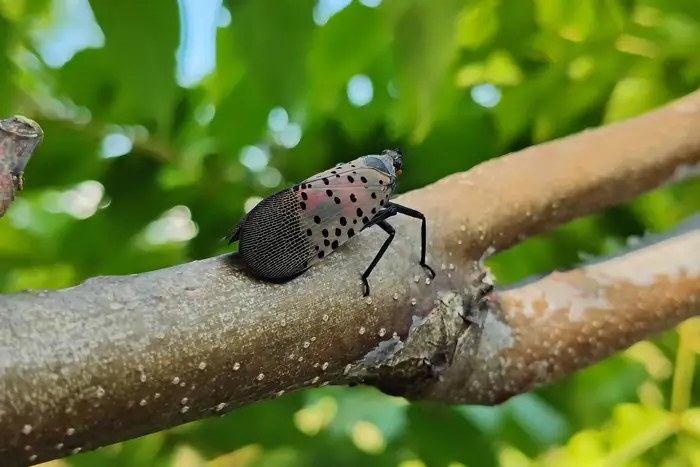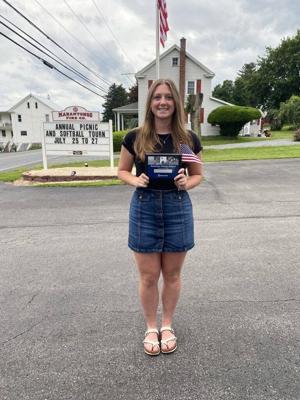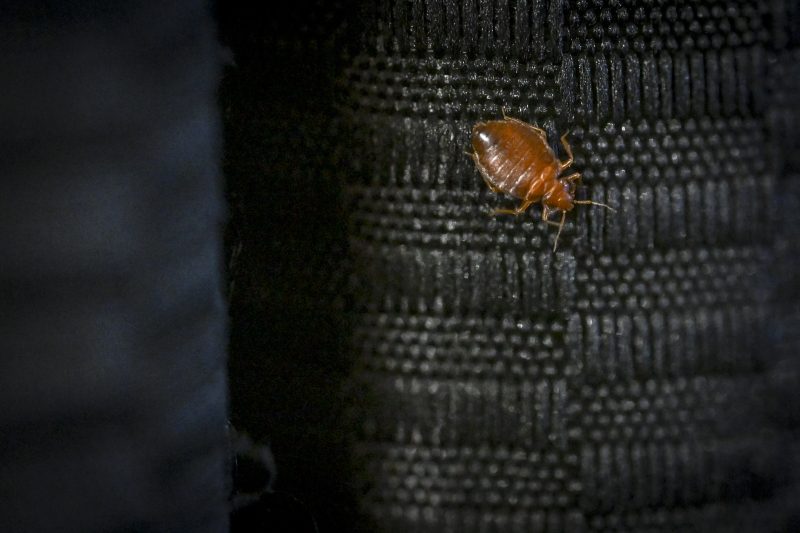Spotted Lanternflies Surge in NYC: What You Need to Know NOW

UPDATE: Spotted lanternflies are back in New York City, and experts say it’s time to rethink how to deal with these invasive pests. New reports confirm that stomping on them may be futile as the population surges this summer, raising alarms among local grape farmers.
Officials from the New York State Department of Agriculture and Markets are warning that the current strategy is not about eradication but rather about slowing their spread. “We know that it isn’t going to eliminate them, really,” said Chris Logue, director of the state Division of Plants. He emphasized that all management options on the table are aimed at controlling, not eliminating, spotted lanternflies.
These colorful pests first invaded the U.S. over a decade ago, arriving in Pennsylvania and spreading to New York City by the summer of 2020. As sightings increase in upstate New York and across the Northeast, local grape farmers face potential devastation. New York ranks as the third-largest grape and wine producer in the nation, making this a significant concern for the agricultural community.
To combat the spread, researchers at Cornell University are mobilizing public assistance. They are cataloging and mapping sightings of spotted lanternflies, urging residents to report any unusual findings. “When somebody sees it in an area where it’s not known to occur, we ask them, if possible, to take a picture first and then stomp on it,” said Brian Eshenaur, an invasive species specialist at Cornell.
Spotted lanternflies are identifiable by their striking appearance: early nymphs are black with white spots, while adults feature pinkish-tan wings adorned with black spots. Residents are encouraged to upload photos to Cornell’s portal, which aids in tracking the insect’s spread and helps grape farmers prepare for infestations.
While reporting in urban areas like the Lower Hudson Valley and NYC is not necessary, as the pests are already established there, it’s crucial to monitor their presence in less affected regions. Eshenaur noted that the spread was always inevitable, referencing South Korea, where the insect proliferated rapidly after its introduction.
Residents are advised to check their vehicles to avoid unintentionally transporting these pests. As the invasion continues in New York City, the Brooklyn Botanic Garden has shifted its focus. “It’s just knowing what to expect, which is not to freak out. They’re going to be with us,” said Shauna Moore, Director of Horticulture.
This summer, the presence of spotted lanternflies is expected to level off, according to Kristin Winchell, a biology professor at NYU. She noted that while fewer swarms may be visible, the insects are here to stay. “We’re seeing them showing up on average earlier and earlier every year,” Winchell explained, warning that this extended activity period increases their mating and reproductive chances.
If you encounter a spotted lanternfly this summer, you can still take action. “If you want to stomp on them, I’m not going to stop you,” Winchell said. However, she also reassured residents that it’s okay if they choose not to engage, highlighting the ongoing need for awareness and reporting.
NEXT STEPS: New Yorkers are encouraged to actively participate in monitoring efforts and to remain vigilant about potential sightings, especially as the summer progresses. The situation is developing, and understanding how to manage these pests is crucial for protecting local agriculture and ecosystems.






